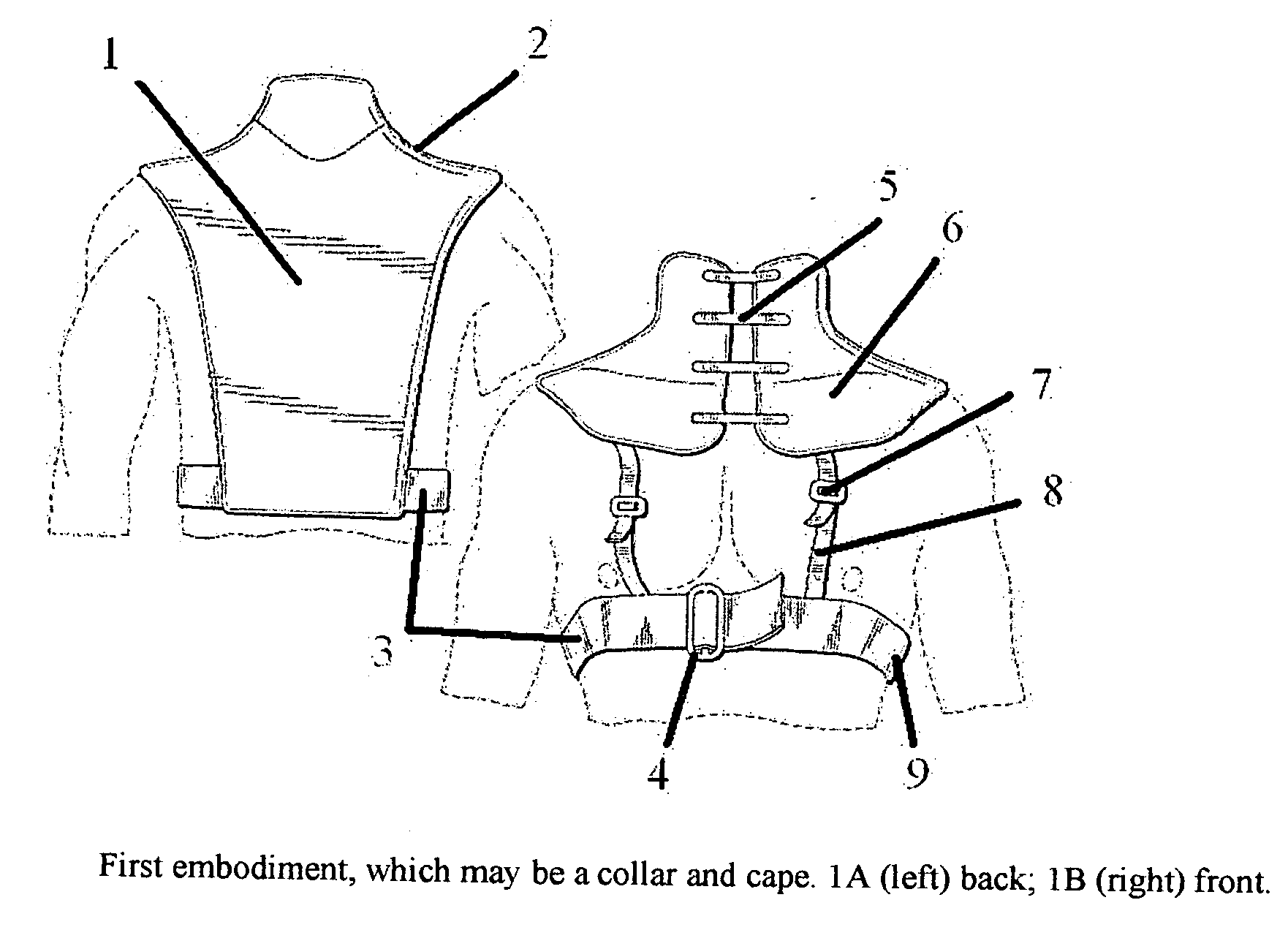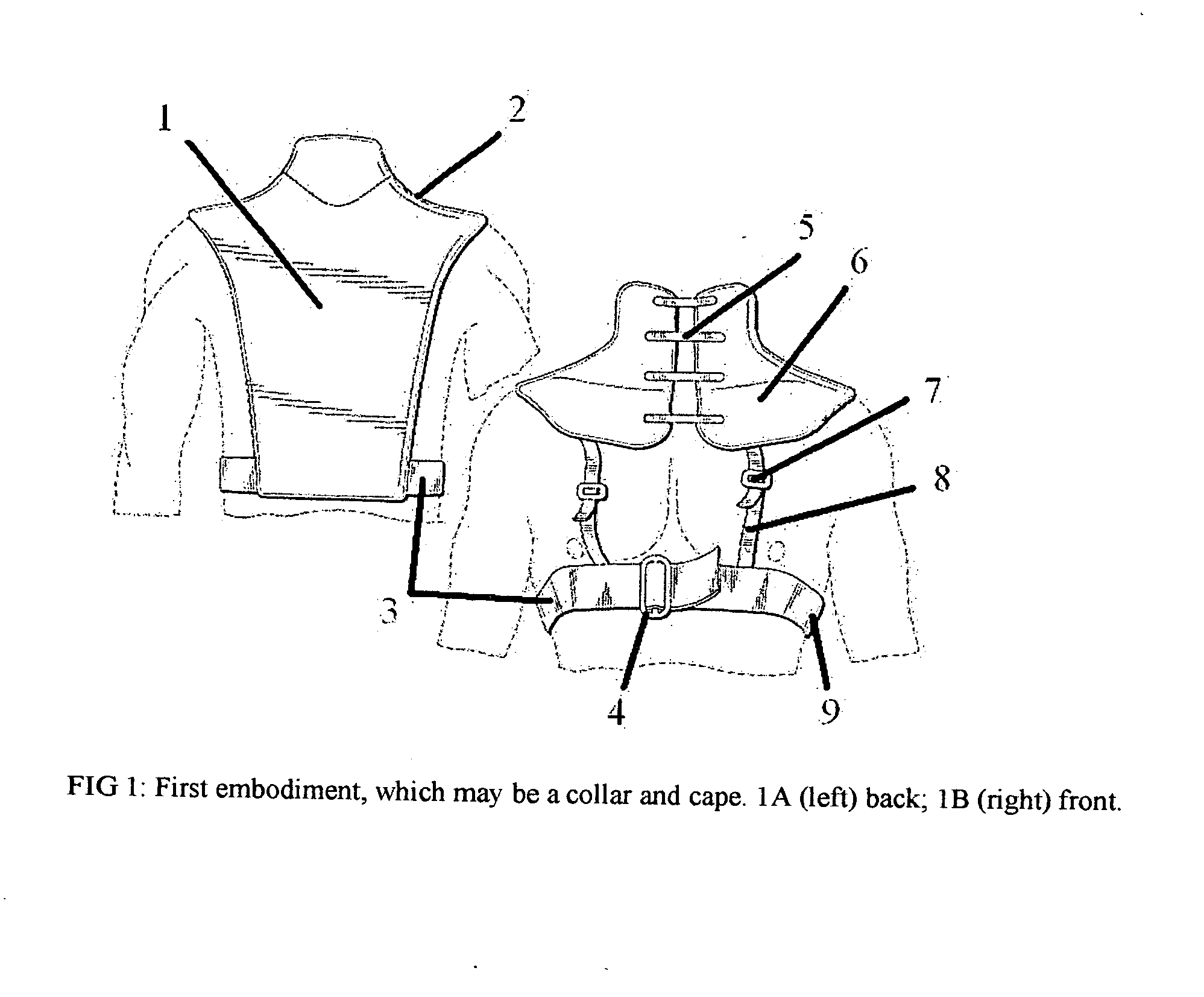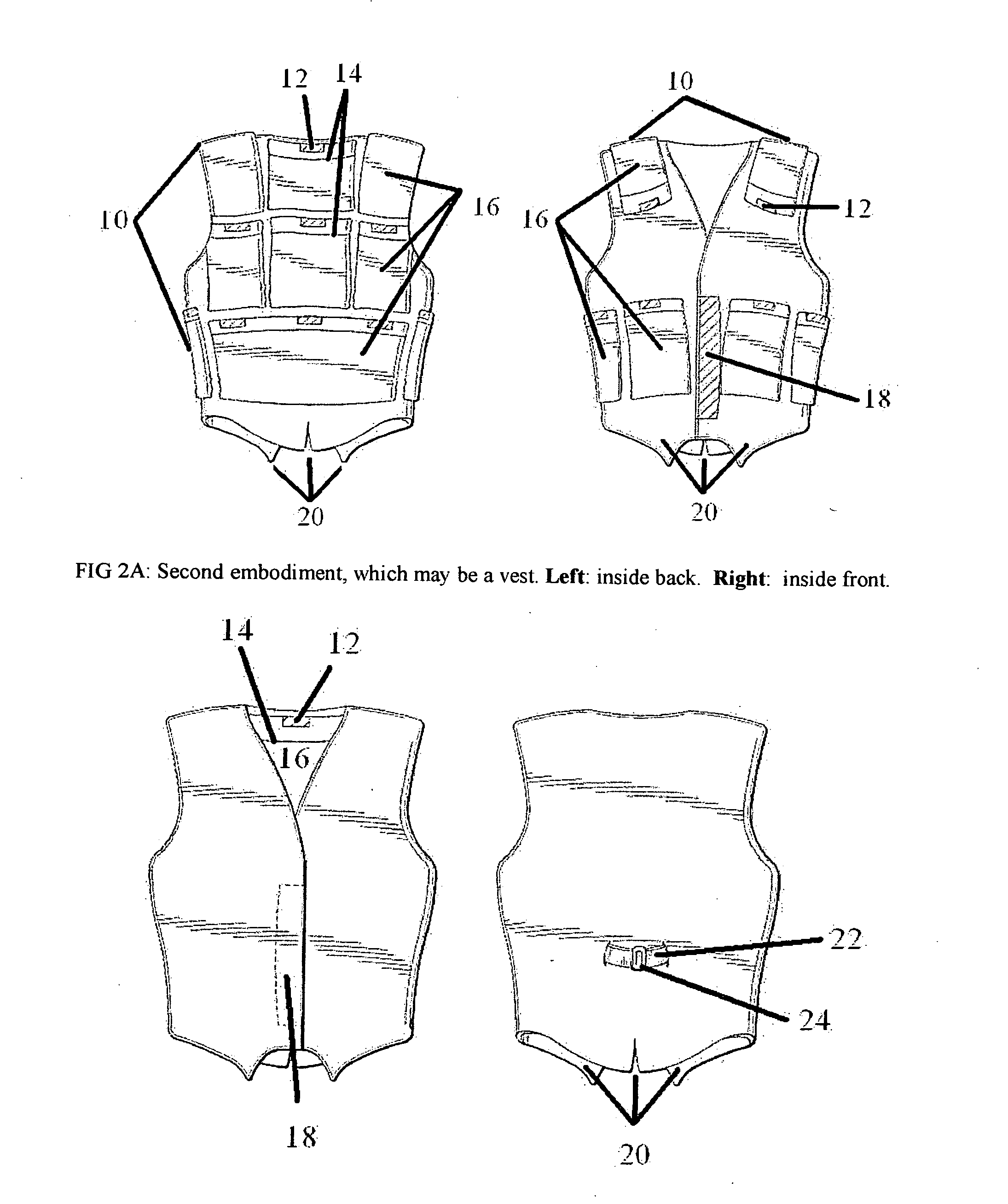Low temperature wearable cooling device for stimulating weight-loss and related methods
a low-temperature, wearable technology, applied in the direction of domestic cooling apparatus, cooling, protective garments, etc., can solve the problems of inability to stimulate weight loss, inability to use ice water bags on the shoulders, and inability to induce weight loss, etc., to achieve the effect of stimulating calorie burn, facilitating use, and reducing the risk of injury
- Summary
- Abstract
- Description
- Claims
- Application Information
AI Technical Summary
Benefits of technology
Problems solved by technology
Method used
Image
Examples
first embodiment
[0023]FIG. 1 depicts both back and front views of a first embodiment a garment for applying low temperatures to areas of the human body. As shown, the garment is defined by: a collar 6 that is configured to fit around the neck of a wearer; cape 1 that merges with the collar and extends over the front of the shoulders and down the back of a wearer; and torso belt 3 with a buckle 4 that is attached to the bottom of the cape 1 wherein the torso belt is configured to be secured around the torso of a wearer; and suspenders 8 between the belt 3 and the shoulder portion of the cape 1 and collar 6. In one embodiment, the collar 6 features closure mechanisms 5 on the front. Suitably, the closure mechanism may be hook and loop fasteners (e.g., Velcro, elastic, string, straps, clips, buttons with adjustable holes, or any other mechanism that allows the collar 6 to be finely adjusted to the neck-size of a wearer (note that a zipper or buttons or any other fastener could also work). The suspende...
second embodiment
Operation—Second Embodiment
[0028]In operation, one chills the cold packs (not pictured) in a fridge, freezer, or other chilling device, either separately or while they are inside the pockets 16. Once chilled, if the cold packs are not already in the pockets 16, one places the sealed cold packs (not pictured) into one or more pockets 16. The garment may then be worn like a vest. The tightness-of-fit may be adjusted using the hook-and-loop fasteners 18, and the strap(s) 22 and buckle(s) 24. The user then wears the vest for as long as desired. Suitably, the set of cold packs may be removed from the pockets so that same may be frozen separately from the garment, allowing several sets of same to be used sequentially in the garment without interruption, and so that the garment can be laundered without the cold packs installed; or the entire apparatus can be thrown into the chilling device, in order to chill it for the next time it is worn. The vest may also be worn without the cold packs ...
third embodiment
Operation—Third Embodiment
[0031]In operation, the garment may be worn like a shirt after the cold packs have been chilled. Usage of the third embodiment is virtually identical to that of the second embodiment, save that the former is donned like a shirt, rather than a vest. The closure or adjustment mechanisms of the shirt may be manipulated to control the tightness of the fit, which may control comfort or tightness of the cold packs against the skin.
Fourth Embodiment
[0032]FIG. 3 depicts a fourth embodiment of a garment for applying low temperatures to the body to stimulate calorie burn. As shown, the garment defines a collar for the neck. The collar may come in two nearly identical parts that join together, differing only in the section where they join, where one of the said parts has hooks 36 and the other one has loops 38 on the corresponding section where they join, this joint providing adjustment to the neck circumference of the wearer. However the embodiment may also come as o...
PUM
 Login to View More
Login to View More Abstract
Description
Claims
Application Information
 Login to View More
Login to View More - R&D
- Intellectual Property
- Life Sciences
- Materials
- Tech Scout
- Unparalleled Data Quality
- Higher Quality Content
- 60% Fewer Hallucinations
Browse by: Latest US Patents, China's latest patents, Technical Efficacy Thesaurus, Application Domain, Technology Topic, Popular Technical Reports.
© 2025 PatSnap. All rights reserved.Legal|Privacy policy|Modern Slavery Act Transparency Statement|Sitemap|About US| Contact US: help@patsnap.com



